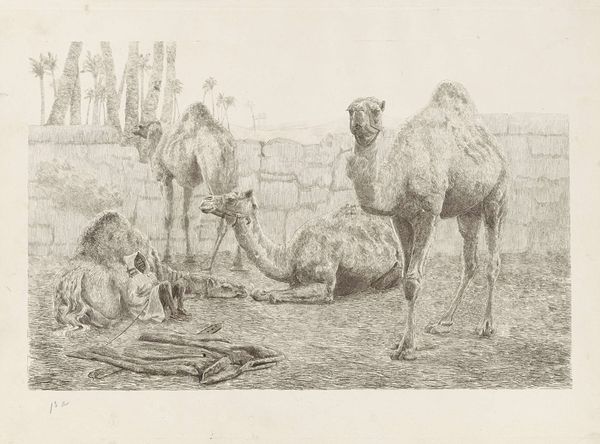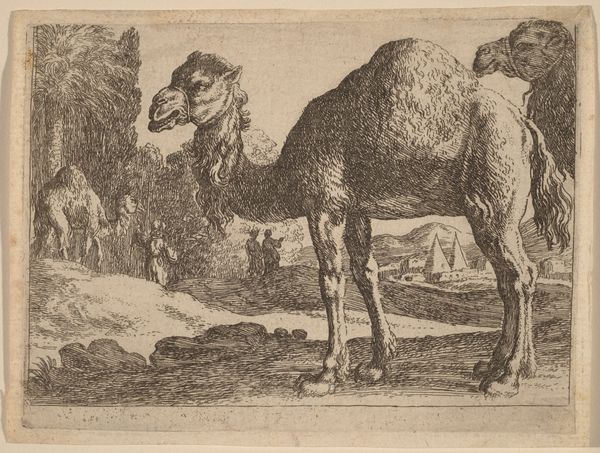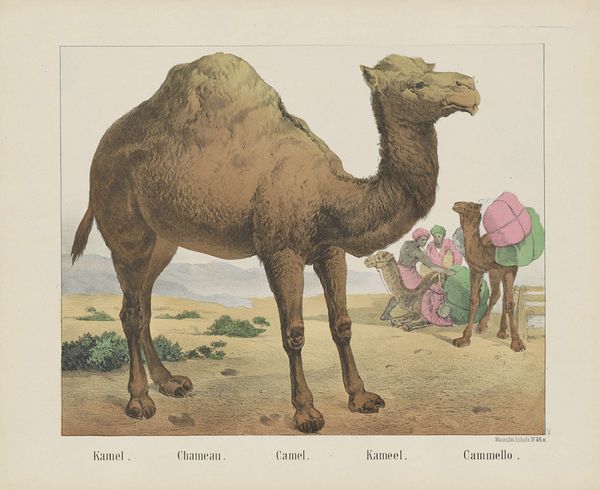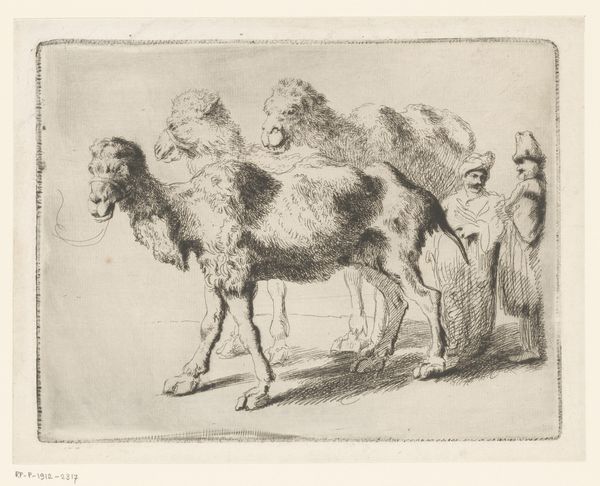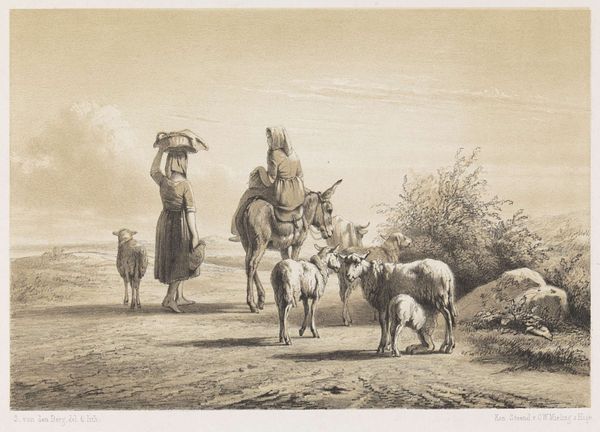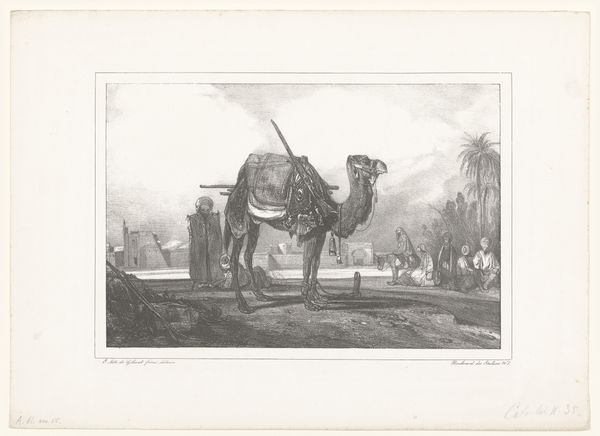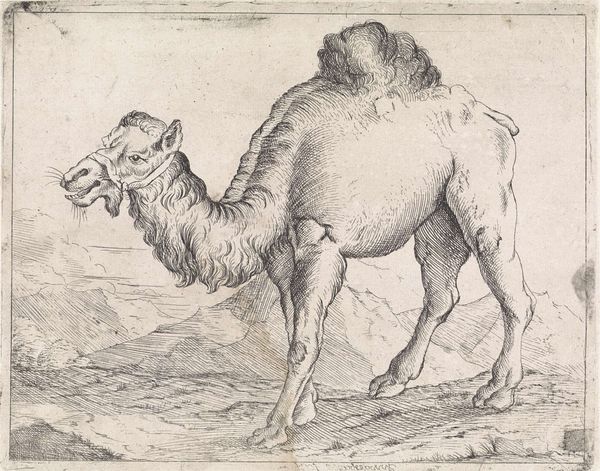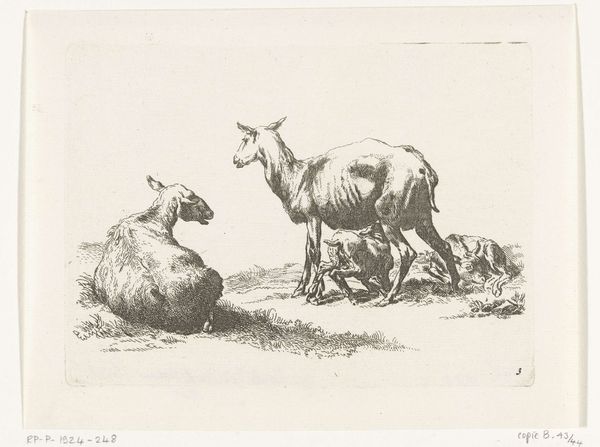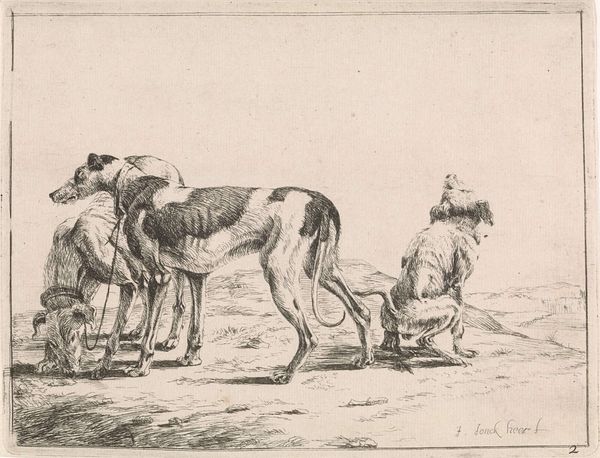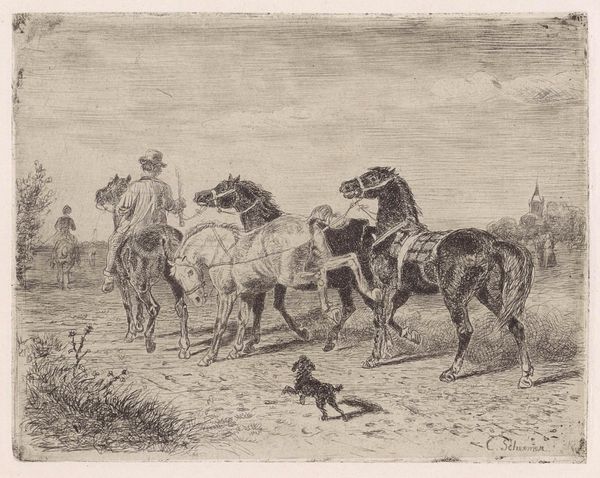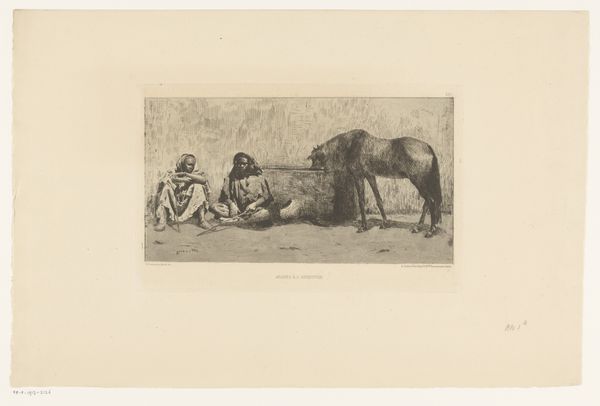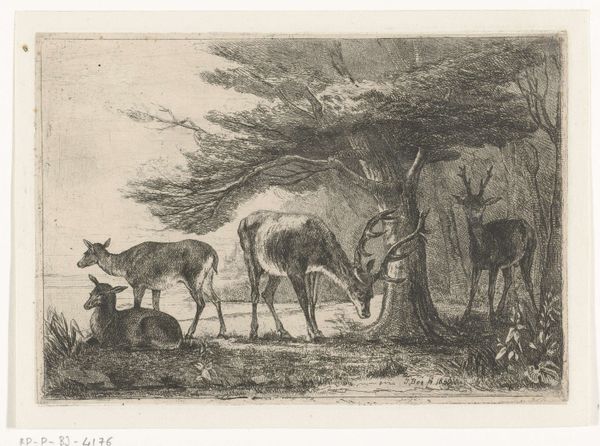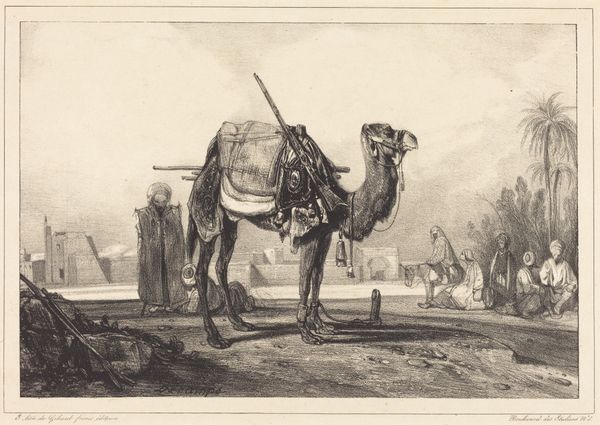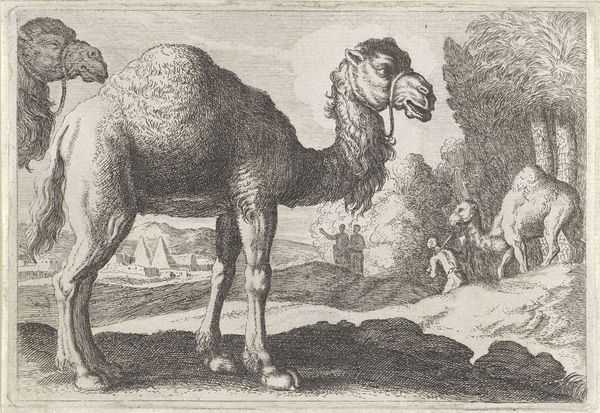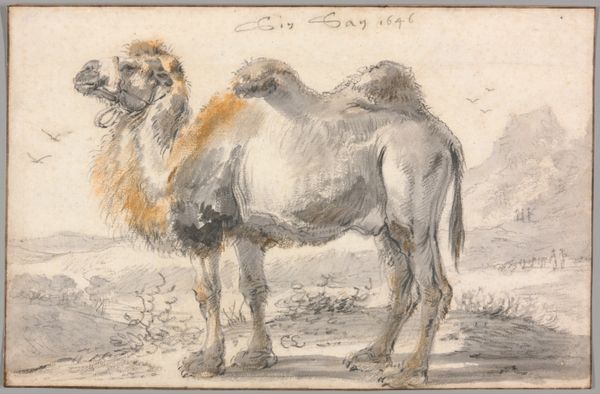
drawing, print, graphite
#
drawing
# print
#
landscape
#
graphite
#
genre-painting
#
realism
Dimensions: height 415 mm, width 595 mm
Copyright: Rijks Museum: Open Domain
Curator: This print, titled "Kamelen," which translates to "Camels" in English, was created by August Le Gras in 1886. It appears to be graphite on paper. Editor: It's very quiet, isn't it? The grey scale and close-up composition evokes this heavy, humid feeling of desert stillness. Almost like waiting, with those imposing camels as the focal point. Curator: Yes, I think that stillness speaks volumes. Le Gras presents a snapshot of Orientalism through a Realist lens, very common at the time. You have these incredibly detailed camels alongside a resting figure. I think it hints at the socio-political dimensions of European interests in North Africa during the late 19th century. Editor: It's striking how he centers labor and rest. Is the relationship exploitative? Are they co-existing peacefully? Look at the blanket strewn carelessly to the left. Even it speaks of the human element as essential to the reading of the animals, doesn’t it? It gives the impression of waiting for a crossing of some sort. Curator: Absolutely, it demands interrogation! Consider the public’s fascination with these then “exotic” regions. Le Gras is depicting the world from a very specific Western perspective, framing labor and cultural exchange. His art operates as a crucial player in the creation of that cultural narrative. How much of that imagery promoted problematic colonial dynamics? Editor: The composition is simple but considered, and the attention to detail is remarkable. What do we know of its reception at the time? Curator: It would have likely been shown at salon exhibitions popular then, where it would contribute to popular understanding— or rather, misunderstanding, given colonialism at the time— of life in the Middle East and North Africa. I think it prompts us to critically reassess what "realism" meant when representing cultures and power dynamics through art. Editor: Right, so it's not just a neutral observation but a deliberate participation in shaping cultural understanding and, let's not forget, perpetuating power imbalances. Food for thought. Curator: Indeed, the "realism" is mediated, not direct. August Le Gras provides, in "Kamelen", an image deeply entrenched in the political and cultural atmosphere of its time and which is worth pondering now.
Comments
No comments
Be the first to comment and join the conversation on the ultimate creative platform.
